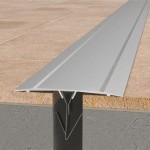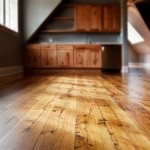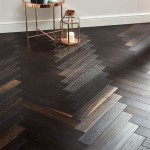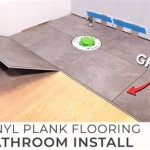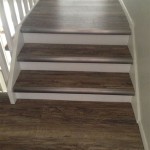Is Polypropylene Safe For LVP Flooring? A Comprehensive Examination
Luxury Vinyl Plank (LVP) flooring has surged in popularity due to its durability, aesthetic appeal, and ease of maintenance. However, alongside its benefits, concerns surrounding the materials used in its construction, particularly polypropylene, have emerged. Understanding the safety profile of polypropylene in LVP flooring requires a comprehensive examination of its properties, potential health effects, and regulatory oversight.
Polypropylene (PP) is a thermoplastic polymer widely used in various applications, ranging from packaging and textiles to automotive components and medical devices. Its versatility stems from its chemical resistance, strength, and relatively low cost. In LVP flooring, polypropylene may be used in different layers, including the core layer or the backing, contributing to the flooring's overall stability and performance.
Understanding Polypropylene's Properties and Potential Risks
Polypropylene is generally considered a stable and inert material under normal conditions. It does not readily degrade or release harmful substances into the environment. However, potential risks can arise from certain aspects of its production, processing, and end-of-life management. One key area of concern revolves around the presence of additives, such as plasticizers and stabilizers, that may be incorporated into the polypropylene formulation to enhance its properties. Some of these additives, particularly certain phthalates, have been linked to adverse health effects, including endocrine disruption and developmental problems. The specific types and concentrations of additives used in LVP flooring can vary depending on the manufacturer and the intended application.
Another potential source of concern is the emission of volatile organic compounds (VOCs) from LVP flooring containing polypropylene. VOCs are organic chemicals that can evaporate at room temperature, potentially contributing to indoor air pollution. Exposure to VOCs can cause a range of health effects, including eye, nose, and throat irritation, headaches, and respiratory problems. The emission of VOCs from LVP flooring can be influenced by factors such as the type and amount of VOCs present in the materials, the temperature and humidity of the environment, and the ventilation rate of the room. While polypropylene itself is not a significant source of VOCs, other components of LVP flooring, such as adhesives and coatings, may contribute to VOC emissions.
Furthermore, the disposal and recycling of polypropylene-containing LVP flooring presents environmental challenges. Polypropylene is recyclable, but the actual recycling rate for LVP flooring is relatively low. Landfilling LVP flooring can lead to the accumulation of plastic waste, which can persist in the environment for extended periods. Incineration of LVP flooring can release harmful pollutants into the air, including dioxins and furans, depending on the combustion conditions and the presence of additives.
Assessing Health and Environmental Impacts of Polypropylene in LVP
To assess the health and environmental impacts of polypropylene in LVP flooring, it's crucial to consider various factors, including the specific formulation of the polypropylene, the manufacturing processes used, the intended use of the flooring, and the disposal methods employed. Rigorous testing and certification programs play a vital role in evaluating the safety and performance of LVP flooring products. These programs typically assess factors such as VOC emissions, chemical content, and durability. Products that meet the requirements of these programs are often labeled with certifications such as FloorScore, GREENGUARD, and Green Label Plus. These certifications indicate that the product has been tested and found to meet specific standards for indoor air quality and chemical emissions.
The potential for human exposure to chemicals from LVP flooring is influenced by several factors, including the surface area of the flooring, the ventilation rate of the room, and the duration of exposure. In general, the risk of exposure is higher in poorly ventilated spaces and when the flooring covers a large area. Individuals with pre-existing respiratory conditions or sensitivities may be more susceptible to the effects of VOC emissions. Proper installation and maintenance practices can help to minimize potential exposure. This includes ensuring adequate ventilation during installation, using low-VOC adhesives, and regularly cleaning the flooring to remove dust and debris.
The environmental impacts of polypropylene in LVP flooring extend beyond the potential for pollution during disposal. The production of polypropylene requires energy and resources, and the transportation of raw materials and finished products can contribute to greenhouse gas emissions. Manufacturers are increasingly adopting sustainable practices to reduce the environmental footprint of their LVP flooring products. This includes using recycled materials, implementing energy-efficient manufacturing processes, and minimizing waste generation. Some manufacturers are also exploring the use of bio-based polypropylene, which is derived from renewable resources, as an alternative to conventional petroleum-based polypropylene.
Regulatory Oversight and Consumer Awareness
Regulatory agencies in various countries have established standards and guidelines to regulate the use of chemicals in building materials, including LVP flooring. These regulations often address issues such as VOC emissions, the presence of restricted substances, and labeling requirements. In the United States, the Environmental Protection Agency (EPA) has established standards for VOC emissions from certain building materials, including flooring. In Europe, the REACH regulation (Registration, Evaluation, Authorisation and Restriction of Chemicals) restricts the use of certain hazardous substances in products, including LVP flooring. These regulations aim to protect human health and the environment by limiting exposure to potentially harmful chemicals.
Consumer awareness and informed decision-making are essential for promoting the use of safer and more sustainable LVP flooring products. Consumers can research the materials used in LVP flooring, look for products with recognized certifications, and choose products from manufacturers that are committed to sustainable practices. Asking manufacturers and retailers about the chemical content and VOC emissions of their LVP flooring products can also help consumers make informed choices. Furthermore, proper installation and maintenance practices can help to minimize potential exposure to chemicals from LVP flooring.
The life cycle assessment (LCA) of LVP flooring can provide a comprehensive evaluation of its environmental impacts, from raw material extraction to disposal. LCA considers factors such as energy consumption, greenhouse gas emissions, water usage, and waste generation. By comparing the LCA results of different LVP flooring products, consumers and manufacturers can identify opportunities to reduce the environmental footprint of the flooring. This can include using recycled materials, optimizing manufacturing processes, and developing more durable and longer-lasting products.
The future of LVP flooring is likely to be shaped by ongoing research and development efforts aimed at creating safer and more sustainable products. This includes exploring new materials, developing innovative manufacturing processes, and improving recycling technologies. Bio-based polymers, such as polylactic acid (PLA) and bio-polyethylene (bio-PE), are being investigated as potential alternatives to conventional petroleum-based polymers in LVP flooring. These bio-based polymers are derived from renewable resources and can offer a lower carbon footprint compared to conventional polymers. However, further research is needed to assess the performance and durability of bio-based polymers in LVP flooring applications.
In summary, while polypropylene itself is generally considered safe, the overall safety of polypropylene-containing LVP flooring depends on various factors, including the specific formulation of the polypropylene, the manufacturing processes used, the presence of additives, and the disposal methods employed. By considering these factors and choosing products that meet recognized safety and sustainability standards, consumers can minimize potential risks and promote the use of safer and more environmentally responsible LVP flooring options. Continued innovation and regulatory oversight will play a crucial role in ensuring the long-term sustainability and safety of LVP flooring.

Is Polypropylene Safe For Vinyl Plank Flooring Chemistry Everyone

Is Polypropylene Safe For Vinyl Floors Chemistry Everyone

What Rug Backing Is Safe For Vinyl Plank Flooring Detailed

What Rug Backing Is Safe For Vinyl Plank Flooring Detailed

Is Polypropylene Safe For Vinyl Floors Chemistry Everyone

Is Polyisocyanurate Safe With Vinyl Floor Plank
Is Polypropylene Safe On Vinyl Floors A Comprehensive Guide
Is Polypropylene Safe On Vinyl Floors A Comprehensive Guide

Non Toxic Vinyl Plank Flooring Brands The Risks My Chemical Free House

Is Polypropylene Safe For Vinyl Plank Flooring Chemistry Everyone
See Also
